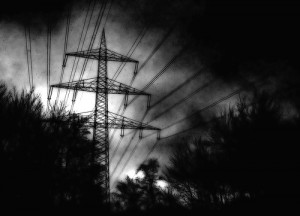Working in academic research means you are working at the forefront of new technology. Here in the School of Systems Engineering, we have some exciting research being carried out in the field of smart grid technologies. Our work with industry means that we are not just asking if it will work but what is practical to implement and under what timescale. Academic and Industrial understanding of a topic can be quite different.
Companies need to know:
– What can be done with the equipment they already have?
– How much will new equipment cost?
– Will new equipment interrupt their production/service provision?
– Will new equipment integrate with old equipment and IT systems?
Sitting in between academia and industry, as all of us in the Energy Research Lab do allows us to bridge the gap to bring about technically feasible and industrially practical solutions to smart grid problems. Over the coming months, all of the Energy Research Lab will be writing about their experiences sitting between academia and industry.
And here is part 1 – about working with Marks and Spencer on Demand Side Management.
Sitting in front of a spreadsheet of asset data is a bit different to setting off to test a piece of equipment in a store. It doesn’t matter how many caveats you think you’ve covered, there’s bound to be something that just hasn’t been available to you before you head in.
Every store in the M&S estate is pretty different, in terms of size, location, building type, stock percentages, customer footfall, sales, peak times and many more. Importantly and perhaps not so obvious is the difference in back of house equipment: fridges, freezers, air conditioning units, building management systems, lighting controls… the list goes on. It’s no surprise then that every store faces different problems when it comes to cutting down their energy use and making the most of their equipment.
My work has been focusing on the use of standby diesel generators – the fact they are rarely used means that information on their running hours can be hard to come by making academic calculations tricky! After 18 months of the project I managed to get to a maintenance test being run on a generator in London. When accounting for time and cost of running generators, I had not considered that someone had to go round the store checking till monitors had been switched off! Or that the generator may not be operating at full capacity.
It’s important then that my calculations reflect that things are different on the shop floor to how they look in an asset register. One of the outputs of my work will be an estimate of how much standby generators could contribute to the future smart grid. There’s no point providing an overestimate for anyone concerned. There may be hundreds of generators across London in non domestic buildings but if none of them can be used due to a clean air initiative implemented by the Mayor’s office then it isn’t practical to assume that they will be part of a short term solution.
A lot of academic work looks to the future and work must be carried out to show what could be done if certain restrictions were lifted, or other constraints were removed somehow. But when a company wants to know what it can do now, you have to be realistic in accordance with time, money, technology and other external constraints. After all, you can’t jump straight to the future and we need intermediary steps to get there. Working with industry certainly brings about a realistic look to how we get there.
Solutions can’t just be technically possible, they have to be practical for those concerned too.
photo credit: <a href=”http://www.flickr.com/photos/muehlinghaus/363988408/”>[ henning ]</a> via <a href=”http://photopin.com”>photopin</a> <a href=”http://creativecommons.org/licenses/by-nc-nd/2.0/”>cc</a>


